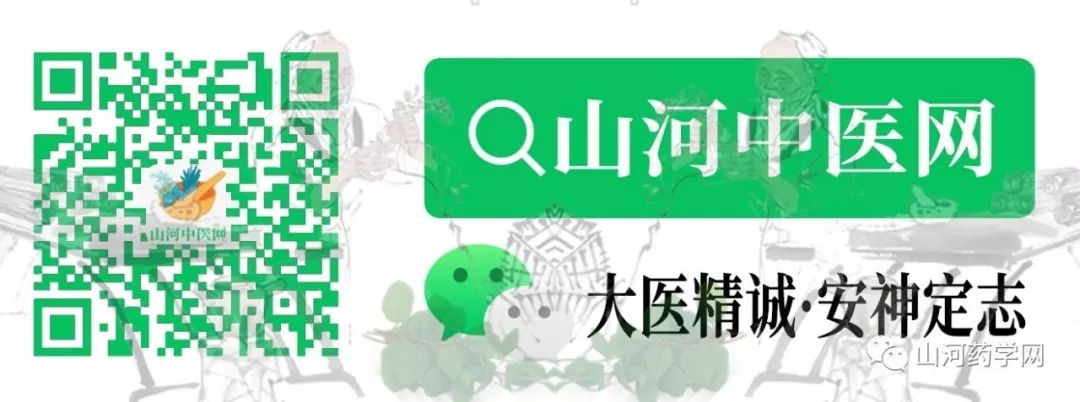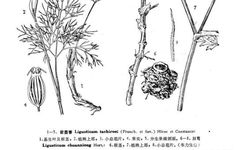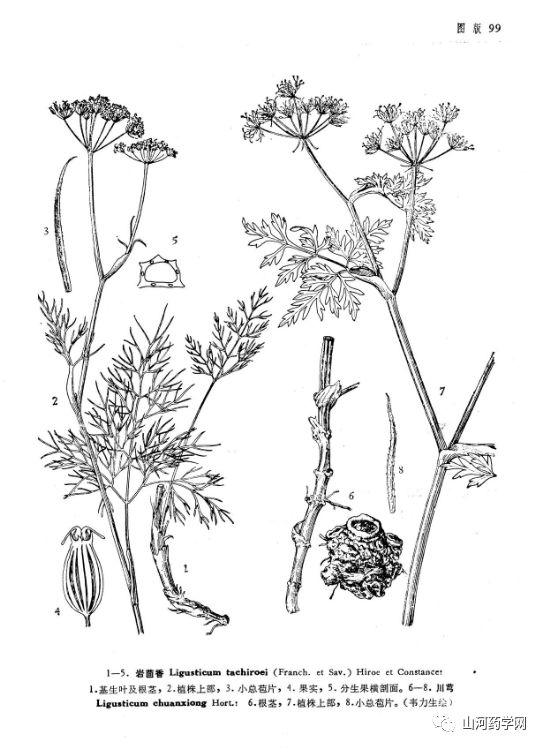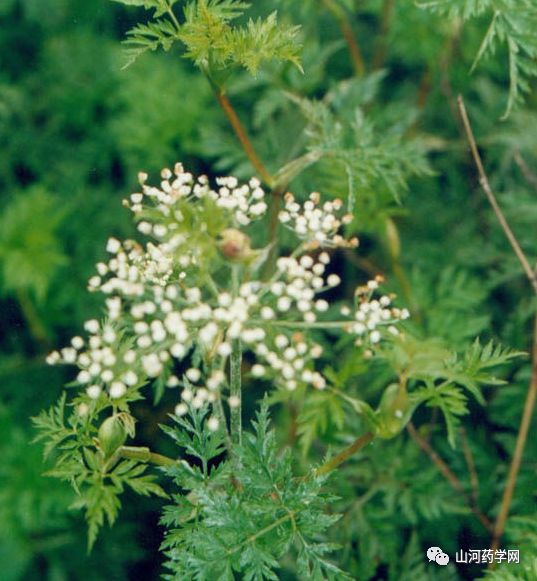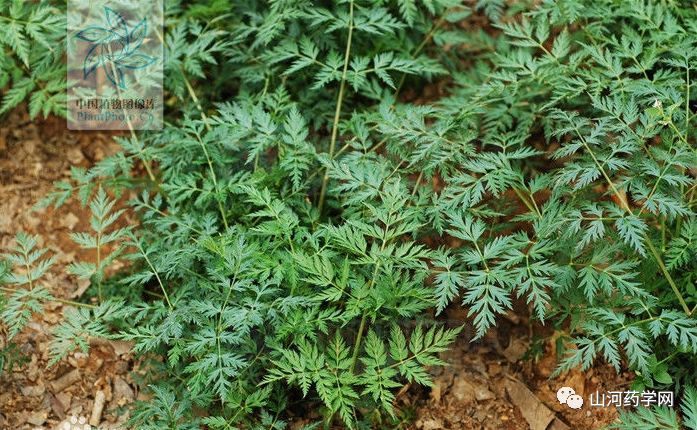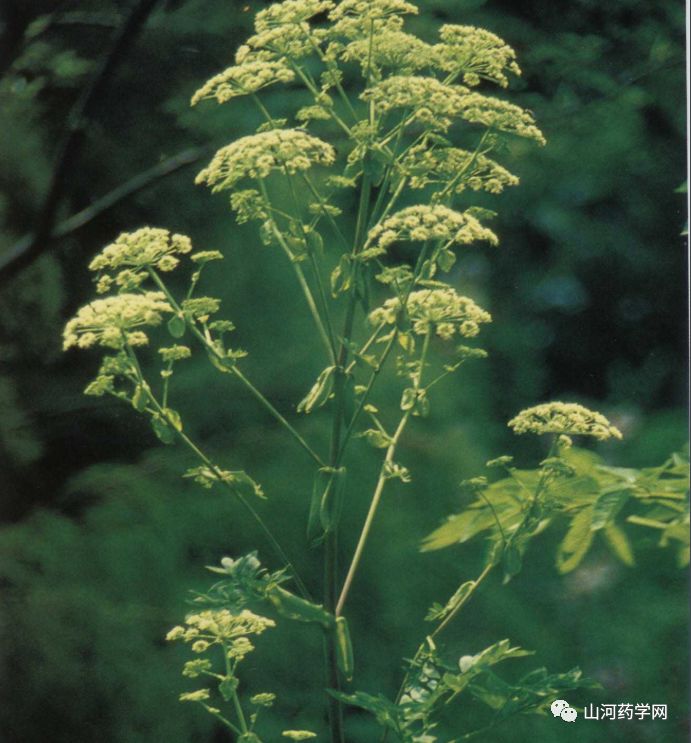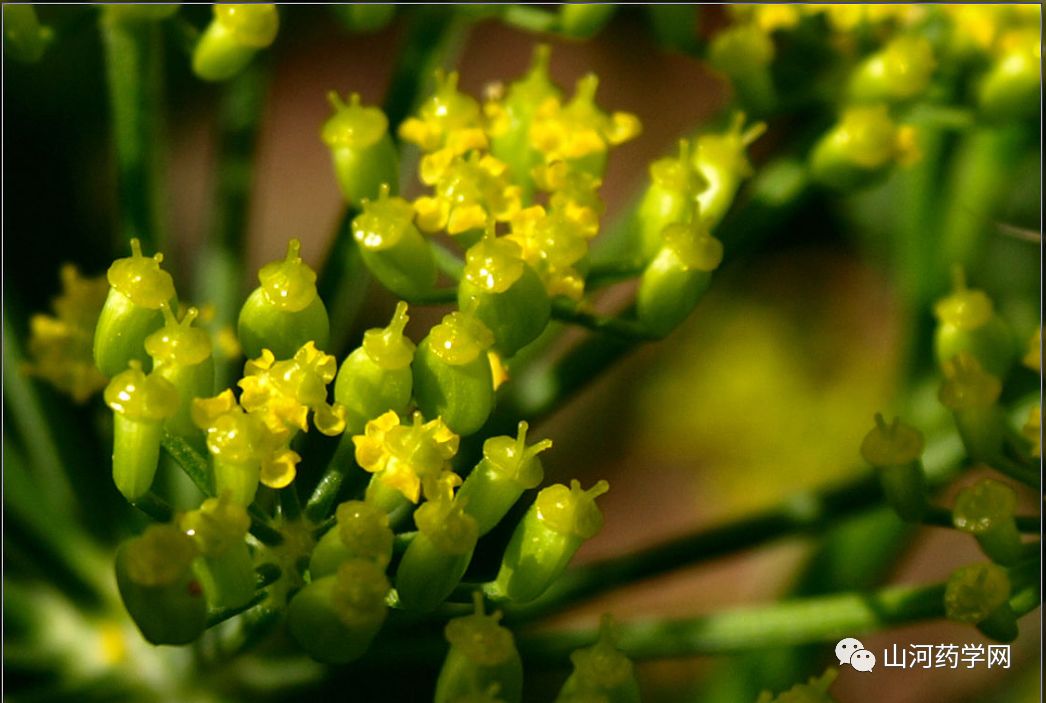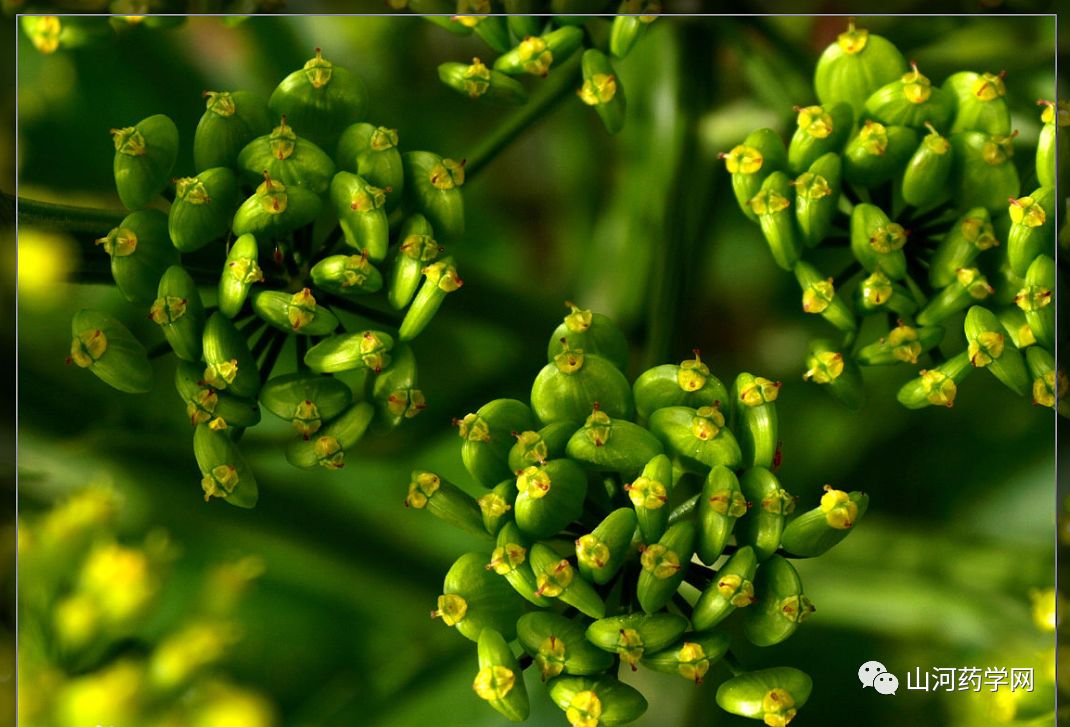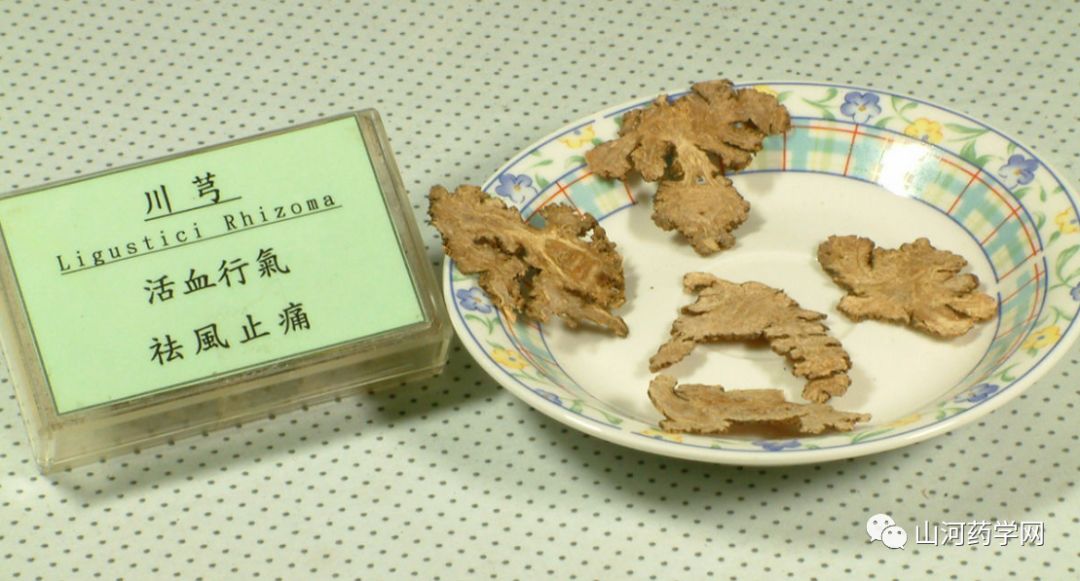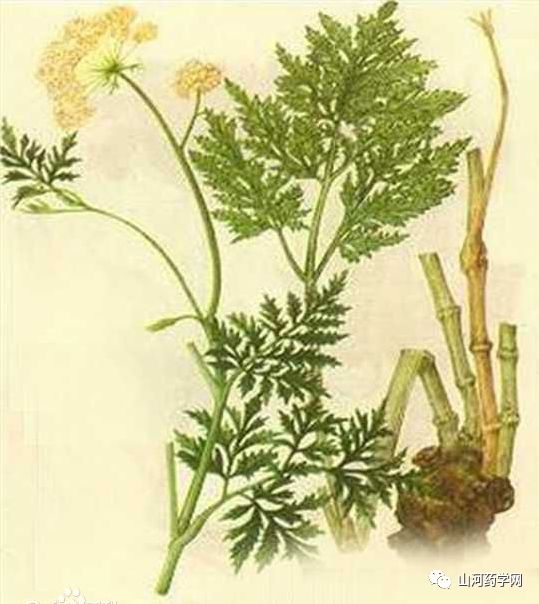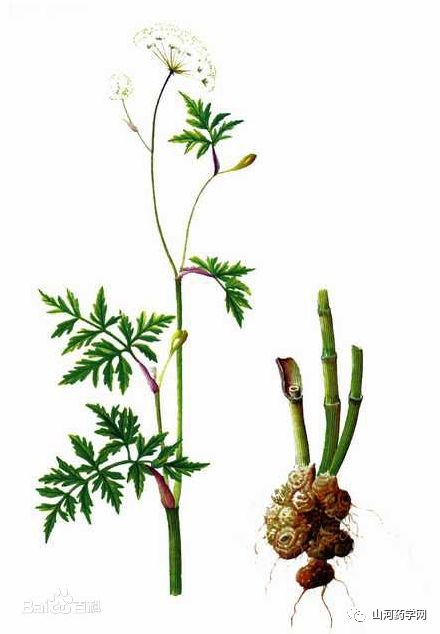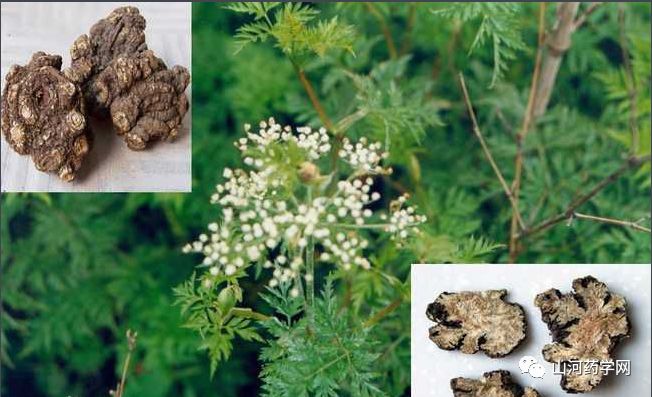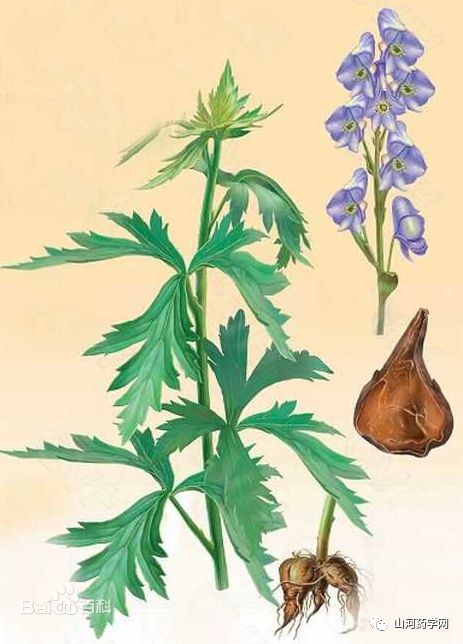| ChuanxiongChuān Xiōnɡ | |
|---|---|
|
|
|
| Alias | Qiangxiong, Xiao Ye Chuanxiong, Shan Ju Qiong, Xiang Guo, Hu Xiong, Ma Xian Qiangxiong, Que Nao Qiong, Jing Qiong, Guan Qiong, Fu Qiong, Tai Qiong, Xi Qiong, Ma Xian |
| Functions | Invigorates blood circulation and promotes qi flow, dispels wind and alleviates pain. Used for irregular menstruation, dysmenorrhea, abdominal pain, stabbing pain in the chest and hypochondria, swelling and pain from falls, headaches, and rheumatic pain. |
| First Recorded In | Tang Ye Ben Cao |
| Toxicity | Non-toxic |
| Meridians | Gallbladder Meridian, Liver Meridian |
| Nature | Warm |
| Taste | Pungent |
Introduction
Chuanxiong:Chuanxiong
Traditional Chinese herb
This product is the dried rhizome of the plant Ligusticum chuanxiong, belonging to the Apiaceae family. It is harvested in summer when the nodes on the stem are prominently protruding and slightly purplish, cleaned of soil, sun-dried, and then dried in a kiln, removing the fibrous roots.
Characteristics
This product is an irregular, nodule-shaped mass, with a diameter of 2-7 cm. The surface is yellow-brown, rough, and wrinkled, with many parallel raised nodes, the top has a depressed round stem scar, and the underside and nodes have many small tuberous root scars. It is solid, not easily broken, with a cross-section that is yellow-white or gray-yellow, scattered with yellow-brown oil chambers, and the formation layer shows wavy ring patterns. It has a strong aroma, with a bitter and pungent taste. It has a slight numbing sensation on the tongue and a mild sweetness aftertaste.
Preparation
Remove impurities, separate by size, soak slightly, wash clean, moisten thoroughly, slice thinly, and dry.
Properties and Meridians
Pungent, warm. Enters the Liver, Gallbladder, and Pericardium meridians. This species is recorded in the Chinese Plant Atlas Database as a toxic plant, with a toxicity level of 328 mg/kg for the volatile oil when injected into the abdominal cavity of mice, causing reduced activity, ataxia, and loss of righting reflex, leading to death within 4-5 hours; the symptoms of the weak alkaline components are similar, while the strong alkaline components can cause paroxysmal seizures, vasoconstriction, and respiratory distress; the lethal dose of the ethanol extract when injected into mice is equivalent to 14-23.8 g/kg of the rhizome. The volatile oil, when injected into dogs, causes salivation, vomiting, defecation, hind limb weakness, tremors, spasms, and paralysis, with doses exceeding 150 mg/kg leading to immediate death.
Functions and Indications
Invigorates blood, promotes qi, dispels wind, and alleviates pain. Used to calm the nerves, treat headaches, abdominal pain, stabbing pain in the chest and hypochondria, swelling and pain from falls, headaches, and rheumatic pain.
[Dosage] 3-9 g.
[Storage] Store in a cool, dry place, protect from pests.
[Properties] Pungent, warm.
1. Shennong’s Classic of Materia Medica: “Taste is pungent, warm.”
2. Wu Pu Ben Cao: “Huang Di, Qi Bo, Lei Gong: pungent, non-toxic, fragrant. Bian Que: sour, non-toxic. Li Shi: raw is warm, cooked is cold.”
3. Tang Ben Cao: “Taste is bitter and pungent.”
4. Ben Cao Zheng: “Taste is slightly sweet, aroma is warm.”
[Meridians] Enters the Liver and Gallbladder meridians.
1. Tang Ye Ben Cao: “Enters the hand and foot Jueyin and Shaoyang meridians.”
2. Yao Pin Hua Yi: “Enters the Liver, Spleen, and Sanjiao meridians.”
[Indications and Contraindications]
Indications: Suitable for headaches due to wind-cold, wind-heat, migraines, and vascular headaches.
Contraindications: Not suitable for headaches due to hypertension, brain tumors, liver fire headaches, and those with yin deficiency and excess heat.
[Functions and Indications] Promotes qi, relieves stagnation, dispels wind, dries dampness, invigorates blood, and alleviates pain. Treats wind-cold headaches, dizziness, hypochondriac pain, abdominal pain, cold bi syndrome, dysmenorrhea, difficult labor, postpartum stasis pain, and abscesses.
1. Shennong’s Classic: “Treats wind stroke entering the brain, cold bi, muscle spasms, traumatic injuries, and women’s blood stasis leading to infertility.”
2. Bei Lu: “Eliminates cold movement in the brain, facial wind, excessive tears, sudden swelling and pain, hypochondriac wind pain, warms the middle and eliminates internal cold.”
3. Tao Hongjing: “For bleeding from the roots of teeth, hold it in the mouth for healing.”
4. Yao Xing Lun: “Treats weakness in the waist and legs, hemiplegia, retained placenta, and abdominal cold pain.”
5. Ri Hua Zi Ben Cao: “Treats all types of wind, qi, fatigue, blood, nourishes the five fatigues, strengthens muscles and bones, regulates various pulses, breaks up blood stasis, nourishes new blood, promotes flesh growth, nasal bleeding, and blood in urine, hemorrhoids, brain abscesses, and promotes pus discharge and resolves stasis blood.”
6. Yi Xue Qi Yuan: “Nourishes blood, treats blood deficiency headaches.”
7. Wang Haogu: “Searches for liver qi, nourishes liver blood, moistens dryness in the liver, and supplements wind deficiency.”
8. Gang Mu: “Dries dampness, stops diarrhea, and relieves stagnation.”
[Dosage] Internal use: decoction, 1-2 qian; or in pills, powders; external use: ground into powder for sprinkling or for topical application.
[Indications and Contraindications] Not suitable for those with yin deficiency and excess heat, those with upper excess and lower deficiency, and those with weak qi.
1. Ben Cao Jing Ji Zhu: “Bai Zhi is a guiding herb. Avoid Huang Lian.”
2. Pin Hui Jing Yao: “Long-term use disperses true qi.”
3. Ben Cao Meng Quan: “Avoid Huang Qi, Shan Zhu, and Wolf Poison. Avoid Nitrate and Talc, and counteract Li Lu.”
4. Ben Cao Jing Shu: “For patients with upper excess and lower deficiency, yin fire flaring up, vomiting, coughing, spontaneous sweating, night sweats, dry throat and mouth, fever, thirst, and irritability, all should be avoided.”
5. Ben Cao Cong Xin: “Qi rising with phlegm and wheezing is not suitable for use.”
6. De Pei Ben Cao: “Severe fire fullness, spleen deficiency, and reduced appetite, and fire stagnation headaches are all contraindicated.”
[Selected Formulas] 1. For all wind attacks, heavy head, headaches, nasal congestion, and body aches: 8 liang of mint leaves (not heated), 4 liang each of Chuanxiong and Jing Jie (remove stems), 8 liang of Xiang Fu (stir-fried), 1.5 liang of Fang Feng (remove stems), 2 liang each of Bai Zhi, Qiang Huo, and Gan Cao (stir-fried); grind the above herbs into a fine powder, take 1 qian after meals with tea to clear the head. (From Ju Fang Chuanxiong Tea Powder)
2. For migraines: finely chop Jing Qiong, soak in wine and take. (From Dou Men Fang)
3. For dizziness and vertigo: Chuanxiong 1 jin, Tian Ma 4 liang. Grind into powder, mix with honey to form pills, each the size of a marble. Take 1 pill, chew, and wash down with tea or wine after meals. (From Xuan Ming Lun Fang Chuanxiong Pills)
4. For wind-heat headaches: 1 qian of Chuanxiong, 2 qian of tea leaves. Boil in 1 cup of water for 5 minutes, take hot before meals. (From Jian Bian Dan Fang)
5. For abdominal pain during pregnancy (placental obstruction): 2 liang of Chuanxiong, 2 liang of Ejiao, 2 liang of Gan Cao, 3 liang of Ai Ye, 3 liang of Dang Gui, 4 liang of Shao Yao, and 6 liang of Gan Di Huang. Boil the seven herbs in 5 liters of water and 3 liters of clear wine, take 1 liter warm, three times a day until healed. (From Jin Kui Yao Lue Ejiao Ai Decoction)
6. For women in pregnancy (5-7 months) who experience pain due to trauma or fetal death in utero, use this medicine to probe; if there is no harm, the pain will stop, and both mother and child will be safe; if the fetus is harmed, it will be expelled immediately: 6 liang of Dang Gui (washed, peeled, cut, and dried), 4 liang of Chuanxiong (washed). Grind into coarse powder, take 2 qian with a small cup of water, boil until dry, add a large cup of wine, boil once, strain, and take warm; if the pain persists, repeat up to three doses. (From Ben Shi Fang Fo Shou Song)
7. For postpartum blood stasis: 1 liang of Dang Gui, 5 qian of Chuanxiong, and 2 qian of Jing Jie (stir-fried). Boil in water and take. (From Qi Fang Lei Bian)
8. For postpartum abdominal pain: Chuanxiong (washed, chopped), Gui Xin (not heated, chopped), Mu Xiang (chopped, dried), Dang Gui (remove fibrous roots, washed, chopped, dried), and Tao Ren (peeled, tips removed, and stir-fried) each 1 liang. Grind into fine powder. Take 1 qian with hot wine, or if unwilling to drink wine, use 1 cup of water with 2 qian of powdered medicine, boil until 70% done, and take warm. (From Wei Sheng Jia Bao Fang Chuanxiong Powder)
9. For postpartum stasis pain: 8 qian of Dang Gui, 3 qian of Chuanxiong, 14 pieces of Tao Ren (peeled, tips removed, ground), 5 fen of black ginger, and 5 fen of stir-fried Gan Cao. Boil with equal parts of yellow wine and children’s urine. (From Fu Qing Zhu Nan Ke Sheng Hua Decoction)
10. For children’s brain heat (tendency to close eyes, or frontal pain, or red swollen eyes): 2 qian each of Chuanxiong, mint, and Puxiao, ground into powder, take a small amount to blow into the nose. (From Quan You Xin Jian)
Indications
1. Qi deficiency headaches. Use finely ground Chuanxiong, take 2 qian with tea. 2. Postpartum headaches. Use equal parts of Chuanxiong and Tiantai Wuyao, grind into powder, take 2 qian with scallion tea. Another formula: add Bai Zhu, boil in water. 3. Wind-heat headaches. Use 1 qian of Chuanxiong, 2 qian of tea leaves, boil in water until 50% done, take hot before meals. 4. For lateral headaches. Use Chuanxiong, finely chopped, soak in wine. Take a small amount daily. 5. For dizziness and vertigo. Use 1 liang each of Chuanxiong and Huai Zi, grind into powder, take 3 qian with tea. Another formula: 1 jin of Chuanxiong, 4 liang of Tian Ma, grind into powder, mix with honey to form pills the size of a marble. Chew 1 pill, wash down with tea. 6. For pregnancy verification (three months without menstruation, check for pregnancy). Take raw Chuanxiong, finely ground, take 1 teaspoon on an empty stomach with Ai soup. If there is slight movement in the abdomen, there is a fetus; if not, there is no fetus. 7. For falls and fetal movement, or fetal death in utero. Use finely ground Chuanxiong, take 1 teaspoon with wine. Take two doses, and if the fetus is dead, it will be expelled. 8. For continuous bleeding during menstruation, day and night. Use 1 liang of Chuanxiong, 1 bowl of clear wine, boil until 50% done, drink slowly. Another formula: same as above, add raw Rehmannia juice and boil together. 9. For children’s brain heat (tendency to close eyes, or frontal pain, or red swollen eyes). Use 2 qian each of Chuanxiong, mint, and Puxiao, grind into powder, take a small amount to blow into the nose. 10. For rotten teeth and bad breath. Use Chuanxiong to boil water, gargle at any time. 11. For toothache. Use one large Chuanxiong, roast it, add Xixin, grind into powder to brush teeth. 12. For various sores and swellings. Use roasted Chuanxiong, grind finely, add appropriate amount of mercury powder, mix with sesame oil and apply to the affected area. 13. For postpartum breast distension (women after childbirth, breasts become thin and long, sometimes drooping to the abdomen, causing unbearable pain). Use 1 jin each of Chuanxiong and Dang Gui, mix, take out half a jin, slice, add water to boil thick, drink at any time without limit. The remaining 1.5 jin, chop into small pieces, burn to smoke, and let the patient inhale through the mouth and nose. After the medicine is used up, another dose can be made.
Clinical Application: Treatment of Angina Pectoris
Take equal parts of Chuanxiong and Honghua, make into tablets (each 12 tablets containing 5 qian of each herb), take 1 tablet, 3 times a day. A course of treatment lasts 4-6 weeks. In a study of 84 cases (including 10 cases that added Gegen flavonoid tablets, 20 mg each, 3 times a day; 2 cases started adding Myrrh tablets after 2 weeks of medication), results showed significant efficacy in 9 cases, improvement in 57 cases, basic ineffectiveness in 17 cases, and worsening in 1 case. It was observed that the severity of the condition did not correlate significantly with efficacy; adding Gegen flavonoids and Myrrh tablets did not show improved efficacy; the impact on blood lipid levels was minimal. Among 60 patients who had been taking nitroglycerin, 20 stopped during treatment, 15 reduced their dosage, and some cases showed improvement in electrocardiograms.
Pharmacological Research
-
Vasodilation
Chuanxiongzine
1. Relieves smooth muscle (aorta) spasms (induced by adrenaline and potassium chloride).
2. Dilates coronary blood vessels, increases coronary blood flow. Counteracts myocardial ischemia and hypoxia caused by posterior pituitary hormones. Reduces the severity of myocardial infarction caused by coronary artery ligation.
3. Dilates cerebral blood vessels, easily crosses the blood-brain barrier, distributes abundantly in the brain; inhibits platelet aggregation; improves microcirculation.
Ferulic Acid
1. Increases coronary blood flow.
2. Alpha receptor blocker, inhibits aortic contraction.
-
Anti-thrombus Formation
Chuanxiong, Compound Coronary Heart II: In vitro anti-thrombus formation (thrombus length ↓, thrombus dry weight ↓).
Chuanxiongzine increases cAMP levels in platelets, reduces TXA2 activity; decreases platelet surface activity, inhibits platelet aggregation, and causes already aggregated platelets to disaggregate.
Sodium Ferulate is a TXA2 synthase inhibitor, inhibiting platelet aggregation.
-
Antispasmodic
Gao Ben lactone ── bronchial smooth muscle spasms;
Ferulic acid, Chuanxiongzine ── uterine smooth muscle spasms;
Water or alcohol extracts ── small intestine and uterus.
Formulas
Formula Name: Yi Qi San
Source: Yi Chao Lei Bian Volume 17.
Composition: Dang Gui, Chuanxiong in equal parts (both washed with wine, stir-fried),5 slices of fresh ginger.
Indications: Postpartum blood deficiency headaches.
Dosage: Roast and decoct together.
Formula Name: Yi Nian Jin San
Source: Imperial Pharmacy Volume 9.
Composition: 2 qian of scorpion tail, 1 liang of Chuanxiong, half a liang of Huayin Xixin,half a liang of fragrant Bai Zhi.
Indications: Toothache.
Preparation Method: Grind into fine powder.
Dosage: Take a small amount, dip a finger in the medicine and apply to the painful tooth, spit out saliva, swallowing is not harmful, no time restriction.
Legends of Chuanxiong
In the early Tang Dynasty, the Medicine King Sun Simiao traveled with his disciples to Qingcheng Mountain in Sichuan, braving the elements to collect medicinal materials. One day, the master and his disciple were tired and rested in a dense pine forest. Suddenly, they saw a large female crane playing with several chicks near a cave in the forest. The Medicine King was captivated, but suddenly heard the chicks cry out, and saw the large female crane with its neck lowered, trembling legs, and continuously mourning. The Medicine King immediately understood that the female crane was suffering from a sudden illness.
The next morning, at dawn, the Medicine King and his disciple returned to the pine forest. Not far from the crane’s nest, the moans of the sick crane were clearly audible. After another day, when the Medicine King and his disciple returned to the pine forest, the moans from the white crane’s nest were no longer heard. Looking up, several white cranes soared in the sky, dropping a small white flower and several leaves that resembled carrot leaves. The Medicine King instructed his disciple to collect and preserve them.
Days passed, and the female crane had completely recovered, leading the chicks to play as usual. The Medicine King observed that the white cranes loved to visit the ancient cave with no roof, where a patch of green grass grew, and the flowers and leaves were the same as those that had fallen from the crane’s beak. The Medicine King instinctively connected the recovery of the female crane with this plant. After experimentation, he discovered that this plant had the effects of invigorating blood circulation, promoting menstruation, dispelling wind, and alleviating pain, so he instructed his disciple to take this medicine down the mountain to treat patients according to their symptoms, and it proved to be effective. The Medicine King excitedly recited: “Qingcheng is the most secluded in the world, the first cave in western Sichuan. Where the immortal cranes pass, good medicine descends from the heavens. This medicine shall be called Chuanxiong!” Thus, it was named Chuanxiong.
Disclaimer:The content on this site is added and organized by users for learning and reference purposes only. The information on the site may not be accurate, comprehensive, or up-to-date, and the content should not be considered the final basis for diagnosing or treating diseases.Shanhe Traditional Chinese Medicine Network reminds users that if you experience any discomfort, please seek medical attention promptly. Thank you for your support and love; we will strive to do better!~!!!
